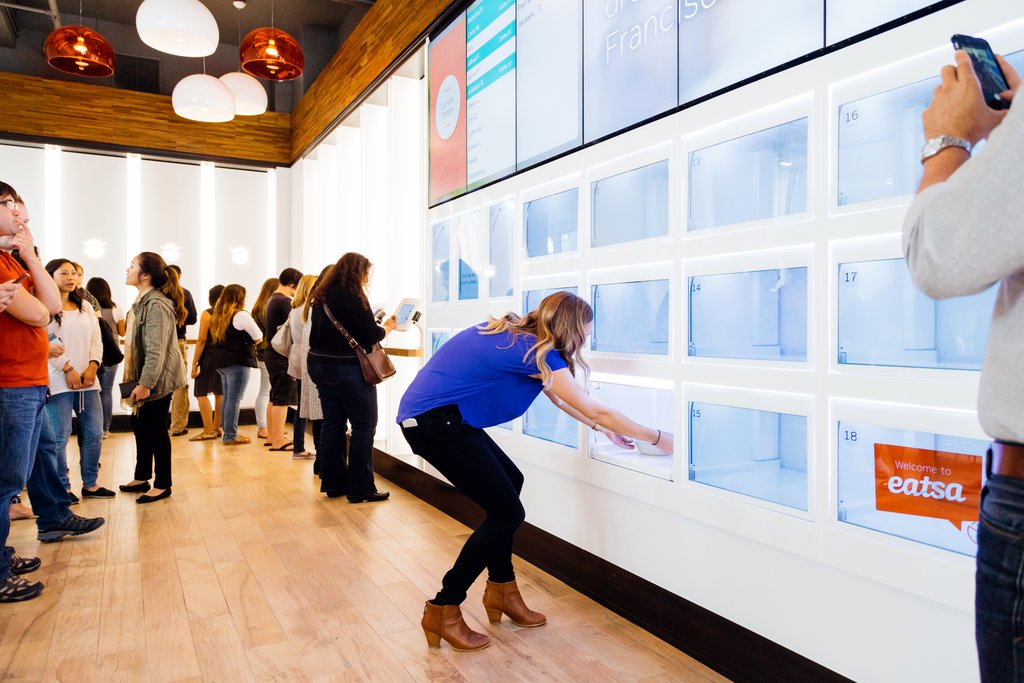I’m just old enough to have been dragged as a small child to the final Automat in Manhattan during its last, sad days, before it was sacrificed at the feet of Ray Kroc, as if it were just one more cow.
In its heyday, despite the lack of servers and cashiers, the Automat was an amazingly social experience and an especially democratic one, with people of all classes and kinds rubbing elbows over cheap turkey sandwiches and cheaper coffee. You could sit there forever. Al Pacino has spoken many times of how he misses the welter of people, the strands of surprising conversations. You don’t get that at McDonalds or Starbucks. It’s just a different vibe (and in the latter case, price point).
The Automat was the past…and, perhaps, prelude. Well, to some degree. I’ve blogged before about Eatsa (here and here), the so-called “digital Automat” which recently opened in San Francisco. It’s disappeared all workers from the front of the restaurant and probably, in time, from back-room preparation. It certainly doesn’t bode well for fast-casual employees, but what of the social dynamic?
In his latest insightful Financial Times blog post about how life is changing in the Second Machine Age, Andrew McAfee thinks about the meaning of Eatsa in our “interesting and uncertain” era. He’s not concerned about wait staff being disappeared from his conversations but acknowledges the restaurant, whose model will likely spread, is not a good sign for Labor. An excerpt:
So is this just an updated version of the old automats, with iPads replacing coin slots, or is it something more? There are indications that Eatsa’s founders want it to be the start of something legitimately new: a close to 100 per cent automated restaurant. Food preparation there is already highly optimised and standardised, and it’s probably not a coincidence that the location’s first general manager had a background in robotics.
But the fact that the restaurant’s “front of house” (ie the dining area and customer interactions) are already virtually 100 per cent automated is more interesting to me than the question of whether the “back of house” (the kitchen) ever will be. Interesting because as front of the house automation spreads, it’s going to put to the test one of the most widely held notions about work in the second machine age: that there will always be lots of service jobs because we desire a lot of human interaction.
I agree with the second half of that statement, but I’m not so sure about the first. We are a deeply social species, and even an introvert like me enjoys spending time with friends and loved ones in the physical world. I’ve also learnt to value business lunches and dinners (even though I’d rather be off by myself reading or writing) because they’re an important part of how work advances.
But in the great majority of cases, when I’m out I don’t value the interactions with the waiting staff and other service workers. They’re not unpleasant or terribly burdensome, but they do get in the way of what I want from the restaurant experience: to eat well, and to talk to my tablemates.•
Tags: Andrew McAfee

